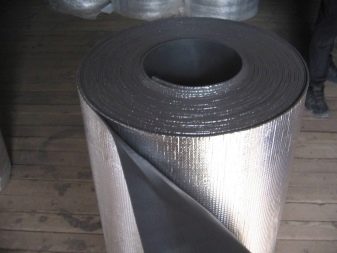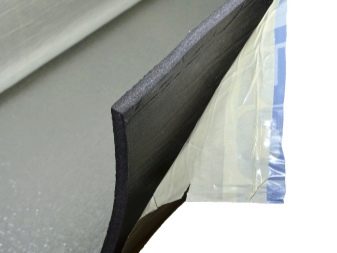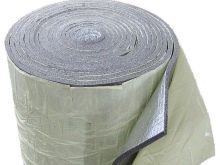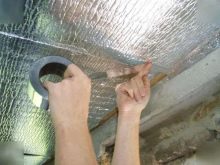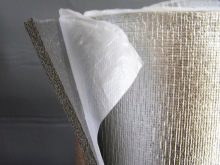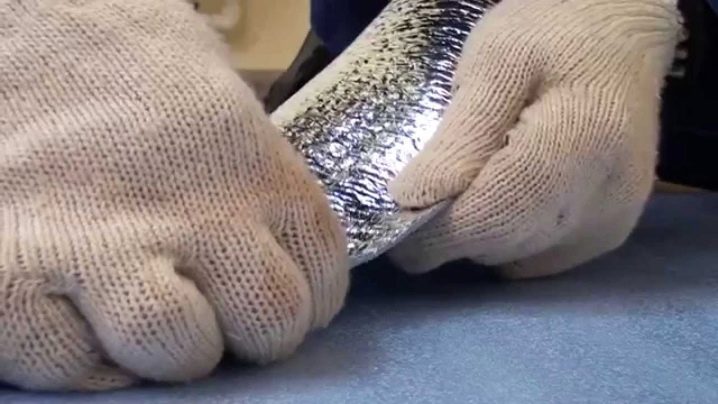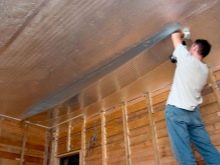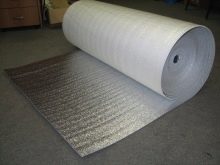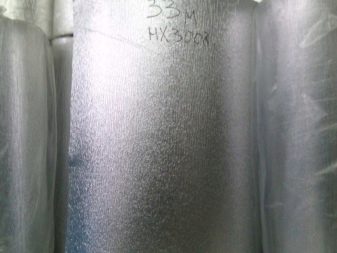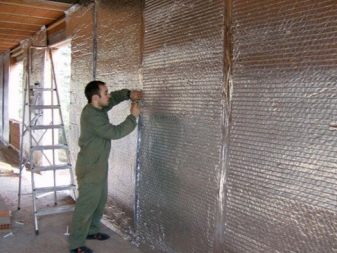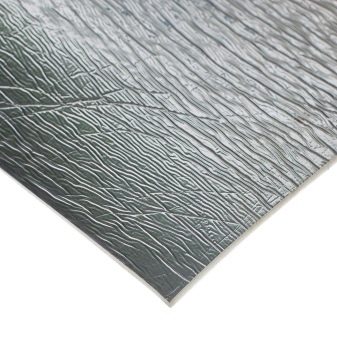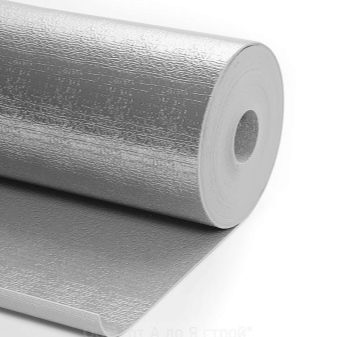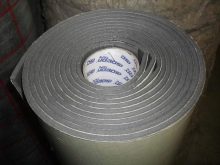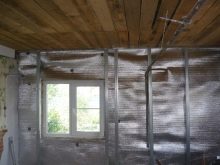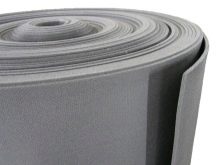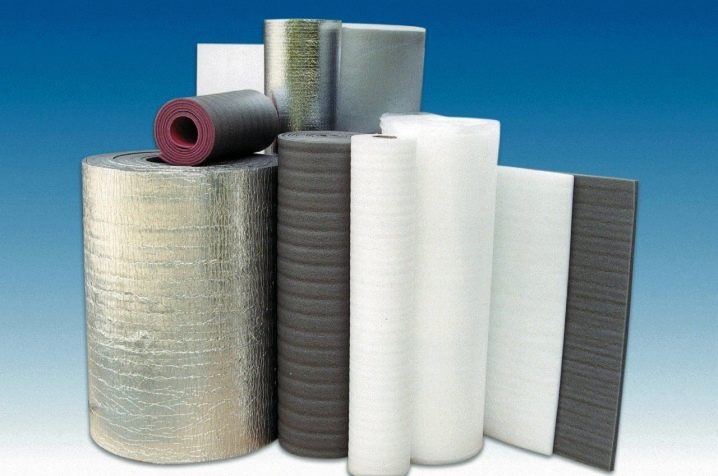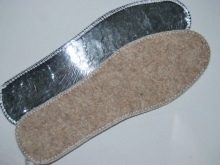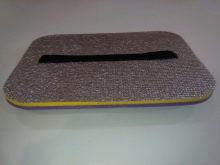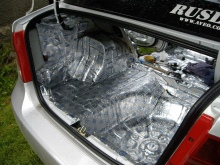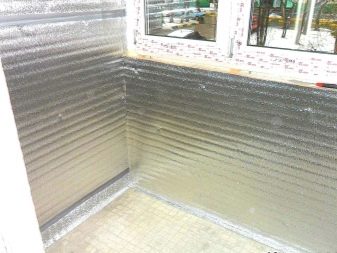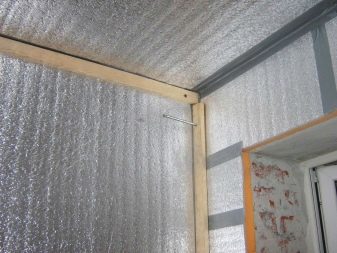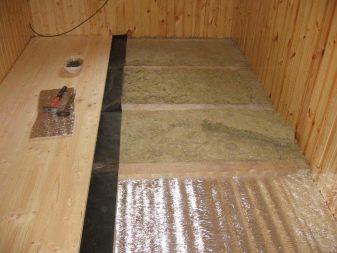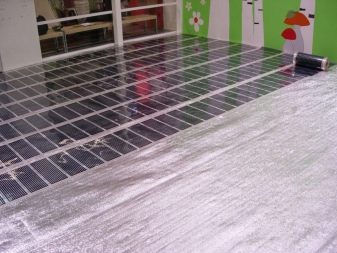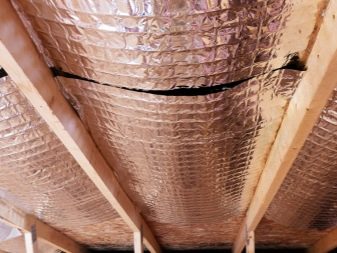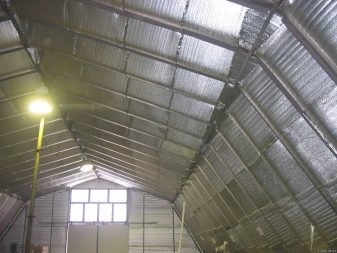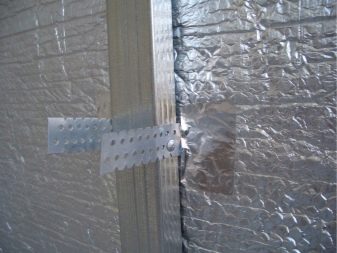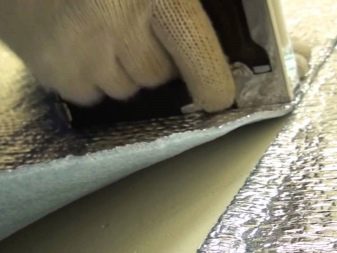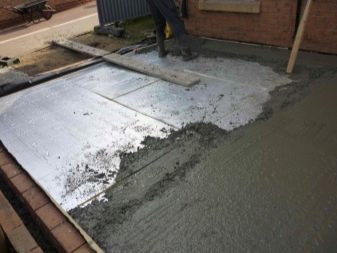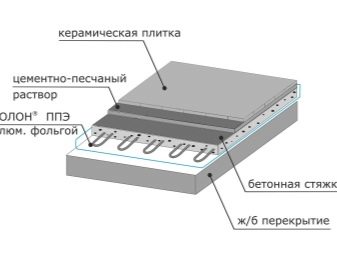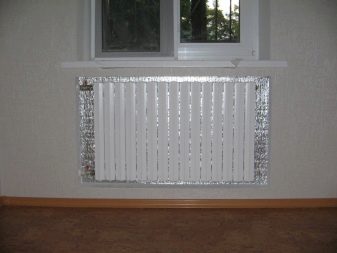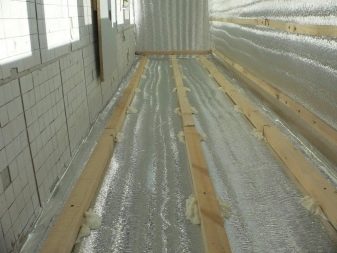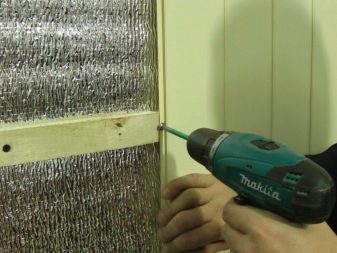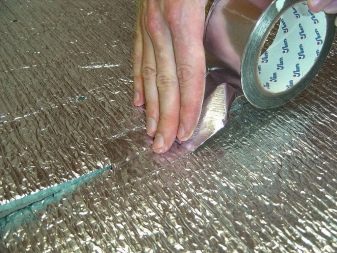Foil izolon: material for universal insulation
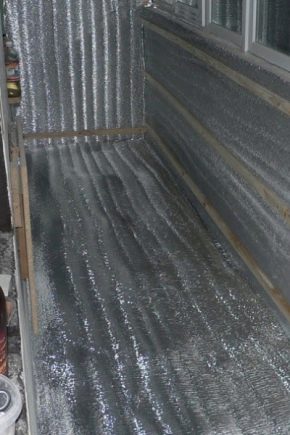
The construction market is replete with all new types of products, among which foil izolon is a versatile material that has become widespread. Features of the isolon, its types, spheres of application - these and some other questions will be covered in the framework of this article.
Special features
Foil isolon is a heat-insulating material based on polyethylene foam. Thermal performance is achieved by applying a metallized polypropylene film to the material. It can cover a layer of polyethylene on one or two sides.
Instead of the metallized film, the foamed polyethylene can be covered with a layer of polished aluminum foil - thisdoes not affect the insulating qualities of the product, but contributes to its strength.
High insulation performance is achieved through the use of foil layer, which reflects 97% of thermal energy, while the material itself does not heat up. The structure of polyethylene assumes the presence of the smallest air bubbles, which provide low thermal conductivity. Foil isolon operates on the principle of a thermos: keeps the set temperature range indoors, but at the same time does not heat up.
In addition, the material is characterized by high vapor permeability (0.031–0.04 mg / mchPa), which allows surfaces to breathe. Due to the ability of izolona to pass moisture vapor, it is possible to maintain optimum humidity levels in the room, avoiding dampness of the walls, insulation, and finishing materials.
The moisture absorption of the insulation tends to zero, which guarantees the protection of surfaces against moisture penetration, as well as the formation of condensate inside the material.
In addition to high thermal efficiency, the isolon foil exhibits good sound insulation (up to 32 dsB and above).
Another plus is the lightness of the material, combined with enhanced strength properties. Low weight allows you to mount insulation on any surface, without requiring their prior reinforcement.
It is important to remember that it is impossible to put plaster over an izolon, to glue wallpaper. These and other finishing materials, fixed directly to the insulation, will pull it under their weight.
Since the material is not designed for such loads, it will simply fall off. Finishing should be done only on a special crate.
Izolon is a non-decaying, environmentally friendly material that does not emit toxins during operation. Even when heated, it remains harmless. This greatly expands the scope of izolona, which can be used not only for exterior but also for interior decoration of residential premises.
Along with environmental friendliness, it is worth highlighting the bio-resistance of the product.: its surface is not susceptible to the attack of microorganisms, the insulation is not covered with mold or fungus, does not become a home or food for rodents.
The metal film shows chemical inertness, resistance to mechanical damage and atmospheric phenomena.
The material has a small thickness, so it is the most suitable material when it comes to internal insulation. For materials of this type, not only technical indicators are important, but also the ability to preserve the largest usable area after insulation. - folgoizolon among the few insulation materials that copes with this task.
The disadvantage of the product is sometimes called a higher cost compared to other popular heaters. However, the difference in price is leveled by the simplicity of laying the material (you can save on the purchase of steam and waterproofing materials, the services of professionals), as well as the high thermal efficiency of folgoisolone.
The performed calculations prove that after its installation, it is possible to reduce expenses for space heating by 30%. It is important that the service life of the material is at least 100 years.
Kinds
Heat reflecting isolon is of 2 types: PES and IPE. The first is a cross-linked insulation with cells of a closed type, the second is an unshielded gas-filled analogue. There is no big difference in terms of thermal insulation abilities between materials.
If sound insulation indicators are important, then preference should be given to PES, whose sound insulation reaches 67%, while the same indicator for IPE is only 13%.
IPE is suitable for the organization of refrigeration equipment and other structures exposed to low temperatures. The operating temperature is -80 ... +80 C, while the use of PES is possible at a temperature of -50 ... + 85C.
PES more dense and thick (thickness from 1 to 50 mm), moisture resistant material. NPE is thinner and more flexible (1-16 mm), but slightly inferior in terms of moisture absorption.
The form of release of material - myta and rolls. The thickness of the material varies in the range of 3.5-20 mm. The length of the rolls is from 10 to 30 m with a width of 0.6-1.2 m. Depending on the length and width of the roll, it can hold from 6 to 36 m2 of material. Standard mat sizes are 1x1 m, 1x2 m and 2x1.4 m.
Today on the market you can find several modifications of folgoisolone.
- Izolon A. It is a insulation with a thickness of 3-10 mm. It has a foil layer on one side.
- Izolon B. This type of material is protected by foil on both sides, thereby achieving the best protection against mechanical damage.
- Izolon S. The most popular modification of insulation, since one of the parties is sticky.In other words, it is a self-adhesive material, extremely convenient and easy to use.
- Isolon ALP. It is also a type of self-adhesive insulation, the metallized layer of which is additionally protected by a polyethylene film up to 5 mm thick.
Scope of application
- Unique technical characteristics have led to the use of izolona not only in construction, but also in the manufacture of industrial and refrigeration equipment.
- It is widely used in the oil and medical fields, as well as suitable for solving plumbing problems.
- The production of vests, sports equipment, packaging materials is also not complete without foil izolona.
- In medicine, it is used in the production and packaging of special equipment, the manufacture of orthopedic shoes.
- The engineering industry uses material for automotive thermal insulation, as well as soundproofing car showrooms.
- Thus, the material is suitable for industrial and domestic use. It is noteworthy that its installation does not require professional skills and special tools. If necessary, the material is easily cut with a knife.And an affordable price makes it possible for people with different financial capabilities to purchase it.
- The economy of consumption also becomes the reason for the widespread use of isolon on the foil in everyday life. The user can cut the material as convenient and economical as possible, and use small sections of materials for thermal insulation of small areas, joints and gaps.
If we talk about the construction industry, this heat-insulating material is optimal for finishing balconies, roofs, exterior and interior walls of the roof. It is suitable for any surface, including for the insulation of a wooden house, because it provides vapor permeability of the walls, which prevents the wood from rotting.
- When finishing the concrete walls, as well as the surfaces of the building blocks, the insulation allows not only to reduce heat loss, but also to ensure sound insulation of the room.
- Folgoizolon is used as a floor insulation: it can be placed under a floor heating system, used in a dry screed or as a substrate for flooring.
- Successful will be the use of material for thermal insulation of the ceiling.Possessing excellent waterproof and vapor barrier properties, the material does not require additional hydro and vapor barrier layers.
- The foil isolon is characterized by elasticity, the ability to take a given shape, so it is also suitable for insulating chimneys, pipelines, structures of complex configuration and non-standard forms.
Mounting technology
The surface of folgoizolon is easily damaged, therefore it needs careful handling during transportation and installation. Depending on what part of the building or structure is subject to insulation, the technology of laying material is chosen.
- If it is supposed to warm the house from the inside, then the izolon is placed between the wall and the finishing material, keeping the air space between them to improve thermal efficiency.
- The best option for fixing insulation will be the use of wooden slats, forming a small crate on the wall. To it with the help of small nails folgoisolone is fixed. It is better to use a material having a foil layer on both sides (modification B). Joints in order to prevent "cold bridges" are glued with aluminum tape.
- For thermal insulation of concrete floors, Isolon is combined with another type of insulation. The latter is laid directly on the concrete, between the floor lags. Folgoisolon spreads on top of this design, on it - flooring. Typically, this type of insulation is used as a substrate under the laminate. In addition to heat saving, it helps reduce the load on the main floor, has a noise insulation effect.
- When insulating a balcony, it is better to resort to the installation of a multi-layer construction. The first layer in it is a one-sided foil izolon, laid out with a reflecting layer. The next layer is insulation that can withstand increased mechanical loads, such as polystyrene. On top of it, the isolon is placed again. The technology of laying repeats the principle of mounting the first isolon layer. After the insulation is completed, proceed to the device sheathing, which are mounted finishing materials.
- The simplest way to insulate a living room in an apartment building without having to disassemble the walls is to position the isolon layer behind the radiators. The material will reflect the heat from the batteries, directing it into the room.
- For floor insulation optimal use of material modifications ALP. Material of type C is used mainly for insulation of buildings for technical and domestic purposes. For heat and sound insulation of automobile salons, an isolon of type C is usually used, combining it with special mastics.
Tips
Buying folgoizolon, consider its purpose - the thickness of the selected product depends on it. So, for insulation of the floor, there is enough products with a thickness of 0.2–0.4 cm. Interfloor overlappings are isolated using rolls or layers, the thickness of which is 1-3 cm. For thermal insulation, it is enough 0.5–1 cm layer. If the isolon is used only as a sound-insulating layer, the article can be dispensed with 0.4-1 cm thick.
Despite the fact that the installation of the material is quite simple, it is important to follow the recommendations of experts.
- Contact of foiled isolon and electrical wiring is inadmissible, since the metallized layer is an electrical conductor.
- When insulating a balcony, remember that folgoisolone, like any other heat insulator, is designed to conserve heat, and not to generate it. In other words, when arranging a warm loggia, it is important to take care not only of insulation, but also of the presence of heat sources (floor heating system, heaters, etc.).
- Preventing the collection of condensate allows the preservation of the air gap between the insulation and other elements of the building structure.
- Stacking material is always done end to end. The joints are covered with aluminum tape.
To learn how to use foil izolon, see the following video:
